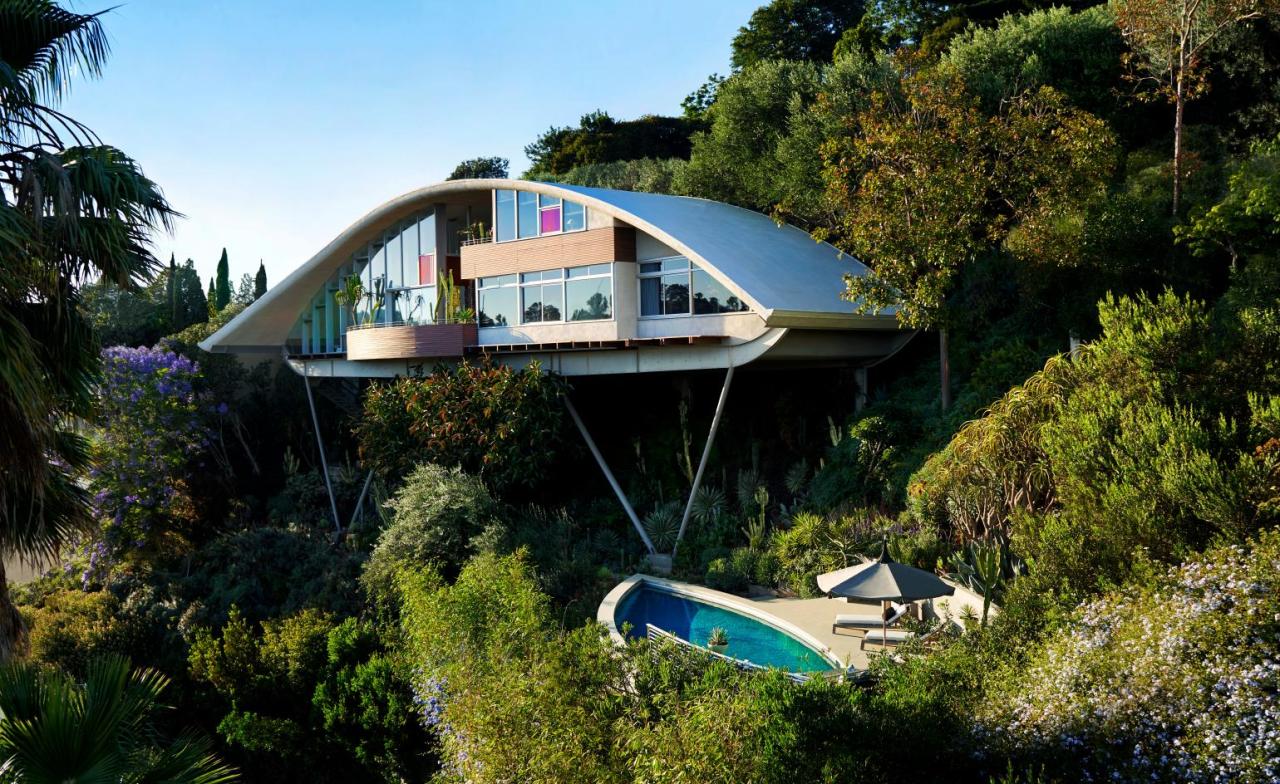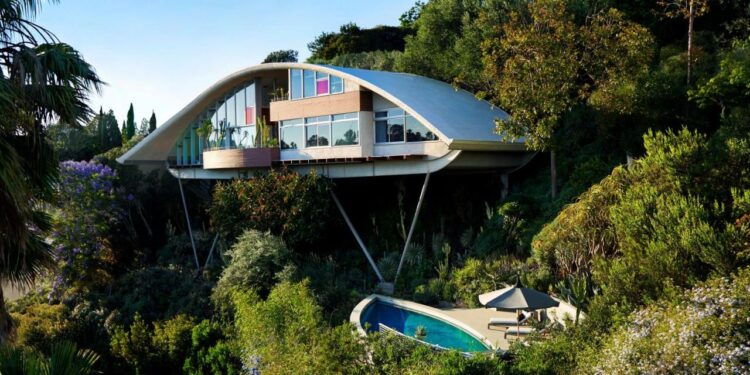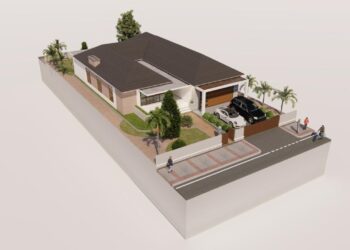Lautner House Design Elements That Inspire Builders sets the stage for this enthralling narrative, offering readers a glimpse into a story that is rich in detail and brimming with originality from the outset.
As we delve into the intricate details of Lautner's architectural style, innovative techniques, and sustainable design practices, a world of inspiration unfolds for builders and enthusiasts alike.


Lautner House Design Elements Overview
Lautner houses are known for their innovative and futuristic architectural style that blends seamlessly with nature. The key design principles that define Lautner's work include organic shapes, integration of indoor and outdoor spaces, and the use of natural materials.Signature Architectural Style
Lautner's signature style involves the use of sweeping curves, dramatic angles, and expansive glass walls that provide unobstructed views of the surrounding environment. These design elements create a sense of harmony between the structure and its natural surroundings.Key Design Principles
- The integration of indoor and outdoor spaces: Lautner believed in blurring the lines between the interior and exterior of a home, creating a seamless transition between the two.
- Organic shapes: Lautner's designs often feature organic, flowing shapes inspired by nature, such as shells, waves, and leaves.
- Use of natural materials: Lautner favored the use of natural materials like wood, stone, and glass to create a warm and inviting atmosphere in his buildings.
Influence of Nature and Environment
Lautner's designs are heavily influenced by the natural environment surrounding the building site. He often took into consideration factors such as sunlight, wind patterns, and existing vegetation to inform his design decisions. This emphasis on harmony with nature is evident in the way Lautner houses seem to effortlessly blend into their surroundings, creating a sense of tranquility and connection to the outdoors.Organic Architecture in Lautner House Design
Organic architecture in Lautner house design refers to the integration of natural elements and forms into the overall design of the structure. This design approach aims to create a harmonious relationship between the built environment and the surrounding natural landscape.Lautner incorporates organic architecture elements by carefully considering the site's topography, climate, and vegetation when designing a house. He often uses large windows, open floor plans, and natural materials to blur the boundaries between indoor and outdoor spaces.Integration of Natural Forms
Lautner seamlessly integrates natural forms into his designs by incorporating elements such as curving walls, expansive glass windows that frame views of the surrounding landscape, and organic shapes inspired by nature. For example, in the iconic Chemosphere house, the circular design and elevated structure mimic the shape of a flying saucer, creating a unique and futuristic look while blending with the hillside setting.Use of Natural Materials
To create a seamless connection with nature, Lautner often uses materials like wood, stone, and glass in his designs. These materials not only enhance the visual appeal of the house but also age gracefully over time, developing a patina that further integrates the structure into its natural surroundings. For instance, in the Elrod House, the use of local stone and timber complements the desert landscape, creating a sense of harmony between the built environment and nature.Innovative Structural Techniques
Innovative structural techniques were a hallmark of John Lautner's designs, as he continually pushed the boundaries of traditional construction methods to create architectural marvels that were ahead of their time. His innovative approach to structural design had a significant impact on modern architecture and building practices, influencing architects and builders around the world.Integration of Nature and Structure
John Lautner's innovative structural techniques often involved integrating nature and structure seamlessly. His designs featured expansive windows, open floor plans, and organic shapes that blurred the lines between indoor and outdoor spaces. This integration of nature and structure not only created a unique aesthetic but also enhanced the overall experience of living in his buildings.Use of Hyperbolic Paraboloid Forms
One of the most iconic structural techniques used by Lautner was the incorporation of hyperbolic paraboloid forms in his designs. These curved, shell-like structures allowed for large, open interior spaces without the need for supporting columns, giving his buildings a sense of weightlessness and fluidity. This innovative use of form challenged traditional construction methods and inspired new approaches to building design.Innovative Structural Materials
Lautner was known for experimenting with innovative structural materials, such as concrete, steel, and glass, to create unique and striking architectural forms. His use of these materials in unconventional ways helped redefine the possibilities of modern architecture and influenced a new generation of architects to think creatively about structural design.Cantilevered Structures
Another innovative structural technique employed by Lautner was the use of cantilevered structures, where a horizontal beam or slab is supported at only one end. This daring approach to construction allowed for dramatic overhangs and floating volumes, creating dynamic and visually stunning architectural compositions that defied gravity and conventional building techniques.Indoor-Outdoor Living Spaces
Indoor-outdoor living spaces in Lautner houses are a key feature that blurs the boundaries between the interior and exterior, creating a seamless connection with nature. This design concept allows residents to enjoy the benefits of both indoor comfort and outdoor beauty simultaneously.Benefits of Indoor-Outdoor Living
- Enhanced Connection with Nature: By incorporating outdoor elements into the living space, residents can feel more connected to the natural environment.
- Increased Natural Light and Ventilation: Opening up the indoor spaces to the outdoors allows for more natural light and fresh air to flow through the home.
- Expansion of Living Space: Indoor-outdoor spaces provide additional areas for relaxation, entertainment, and dining, effectively expanding the usable square footage of the home.
Challenges of Designing Indoor-Outdoor Spaces
- Weather Considerations: Designing spaces that seamlessly transition between indoor and outdoor areas requires careful consideration of weather conditions to ensure comfort and functionality year-round.
- Maintenance: Outdoor elements incorporated into indoor spaces may require additional maintenance to keep them looking their best and functioning properly.
- Privacy Concerns: Balancing the desire for an open connection with nature while maintaining privacy can be a challenge in designing indoor-outdoor living spaces.












